“I’m excited to tell you that I’ve seen four sandhill cranes fly past my home the past few days,” wrote Mary-Anne Boyes of Whitby. Such a welcome email! It’s been a year since our local newspapers folded and readers of my Great Outdoors column stopped phoning and emailing, eager to share their sightings and ask their nature questions. I miss it. I miss them!
So I was very glad to hear from someone who still has my contact info. And like Mary-Anne, I love cranes. I wrote back in delight, telling her about my last sandhill crane sighting, which happened to be June in Mongolia. Long legs, long neck, long bill. Bulky grey body tinged with brown; red forehead—there it was, hanging out with a family of common cranes. Fond and familiar to all the Canadian birding friends I was traveling with, but bird-of-the-trip, a lifer, for our expert leader, Tumendelger Humbaa. Sandhill crane doesn’t even appear on the checklist or in the field guide to birds of that vast and magnificent land.
I knew exactly how Tumen felt, because I’d just seen a lifer of my own, demoiselle crane. A major draw for me from the first, reading the proposed trip itinerary and having demoiselles likely on several days, promised at several hotspots. In fact I had to wait breathlessly for three whole days after landing in Ulaanbaatar, scanning every field and hillside we drove past, before reaching a lake and good crane habitat, where I was rewarded with my first sighting. What a thrill, finally seeing this elegant, beautiful bird. That day, about a hundred of them!
Open country with not many humans around, and lots of wetland and grassland habitat for big birds to rest during migration and breed in. That’s what most cranes need, and Mongolia, fortunately, has lots of it. We also saw white-naped cranes, and if we’d had time to scour the country at the right time of year may have found much rarer red-crowned, Siberian and hooded cranes, populations of which are all threatened or endangered.
Half the fifteen species of cranes in the world are having a heck of a hard time, given all the pressures human overpopulation puts on them through hunting and habitat loss. Whooping cranes are a case in point, with the estimated twenty thousand that flourished across North America before Europeans came decimated to a mere 15 individuals by 1941, when someone finally noticed and decided to try and rescue them from extinction.
One of the most inspirational stories of all times is how George Archibald and Ron Sauey, birding buddies doing their doctorates at Cornell University, chose to dedicate their lives to protecting and preserving cranes around the world. The International Crane Foundation, begun in the Sauey family barn in Baraboo, Wisconsin in 1973, has grown into a huge global endeavor to “conserve cranes and their ecosystems, watersheds and flyways on which they depend,” according to their mission statement. My heroes, George and Ron, figured that appealing to people for help in saving such charismatic big birds would help support a lot of other threatened wildlife in the process. Cranes are revered in many cultures, symbols of longevity, marital harmony, good luck and happiness. Plus they fly between heaven and earth.
I treasure the memory of visiting the ICF headquarters in Baraboo many years ago with my mother, who gave me my love of birds and nature. We were walking the grounds, viewing breeding pairs of cranes in their pens, when one of us commented on how wonderful it would be to see all fifteen crane species in the world in the wild, and the other agreed, with a smile. We’d agreed that we would hike the Appalachian Trail together, too, a happy plan we never got around to.
Nice thought for the dreamworld, right? I put it aside for years, until the idea of renting a car with friends and birding around South Africa, where three crane species breed, came onto my radar, and I suddenly wondered how close I might be to fulfilling that impossible wish Mom and I had talked about. Whooping cranes at Aransas, and my first flock of sandhills near San Antonio, Texas. Sarus and Brolgas on the Atherton Tablelands of Australia. Common crane in Europe; a pair of black-necked cranes in a roadside field in Sichuan. White-naped and Siberian cranes at Lake Poyang north of Shanghai; red-crowned, black-crowned and hooded cranes elsewhere in China... Oh my gosh! Eleven!
We did find blue cranes and gray-crowned cranes in South Africa, both stunning species, on a month-long adventure right before covid, but missed wattled crane, tallest of all at two meters, by visiting just a bit too late in the breeding season. So close, and such a disappointment!
So my lifer in Mongolia, demoiselle, became my fourteen crane out of fifteen, to my awe and amazement. Demoiselle cranes are pictured on walls of ancient Egyptian tombs, and are believed by some to carry souls of the departed up to heaven. I hope they brought word of my luck, my great fortune, to my mother. She’d be smiling.
Please support the International Crane Foundation at “savingcranes.org”

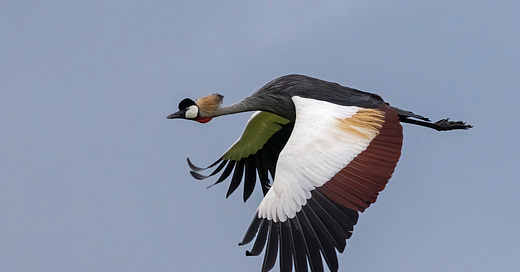






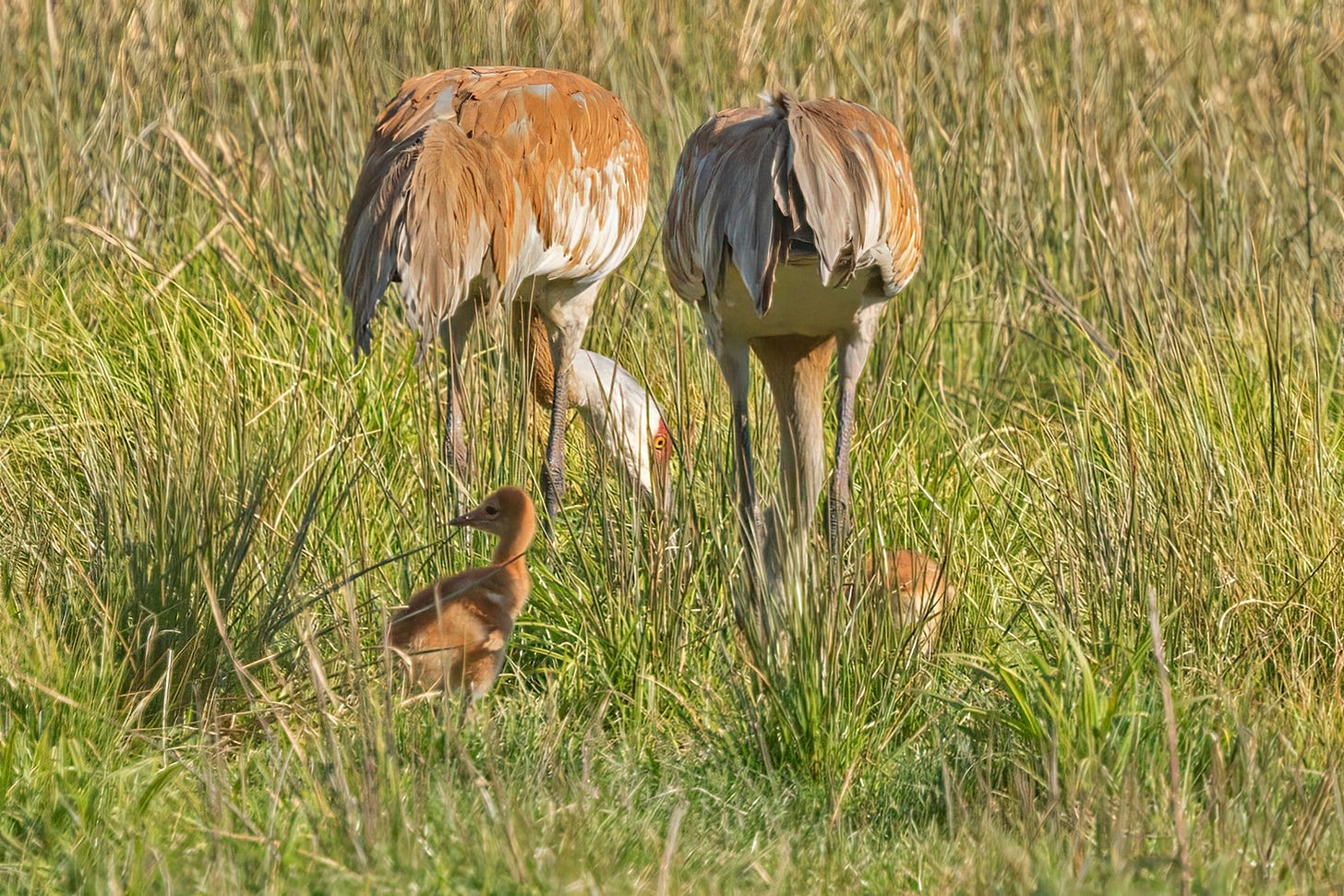
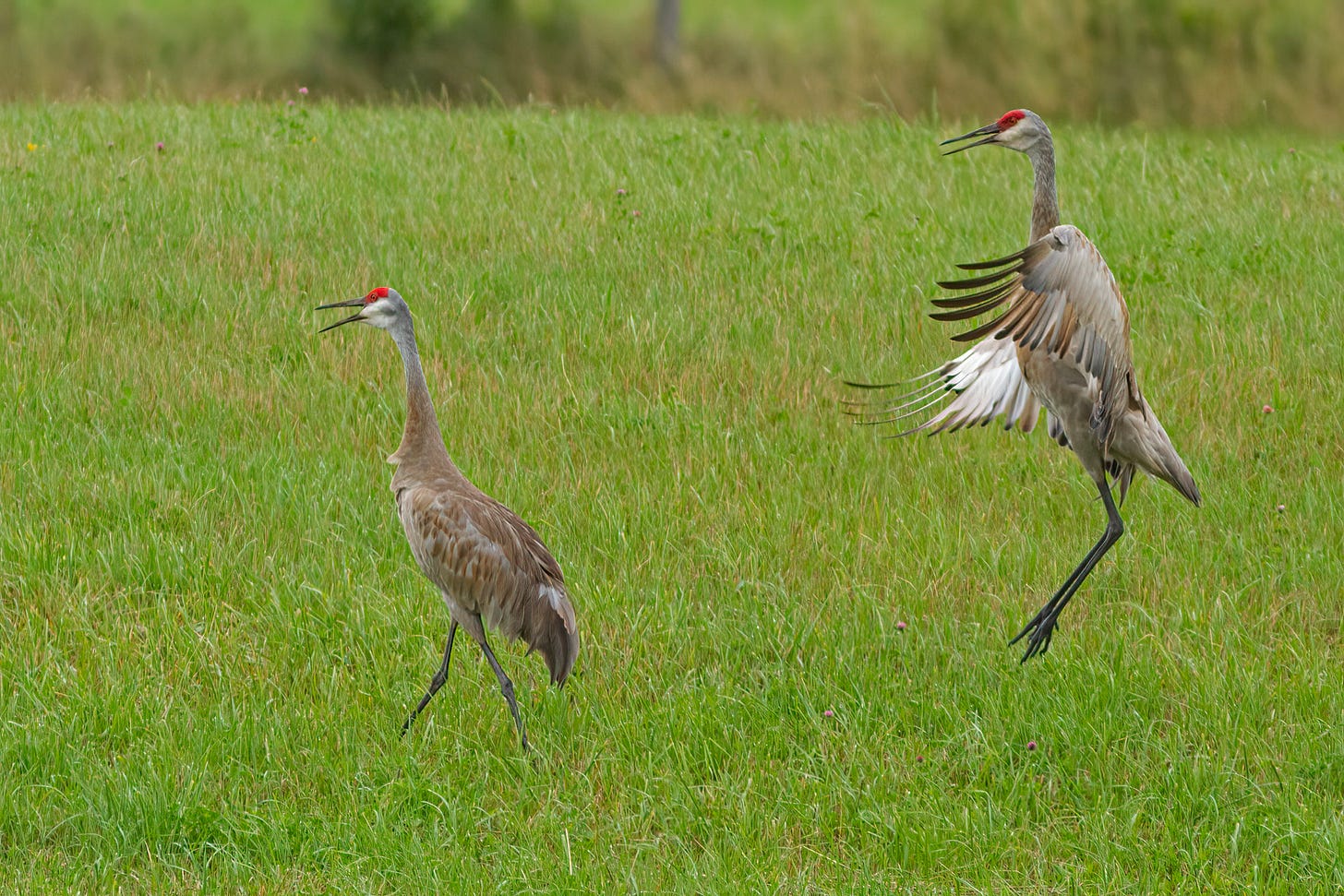
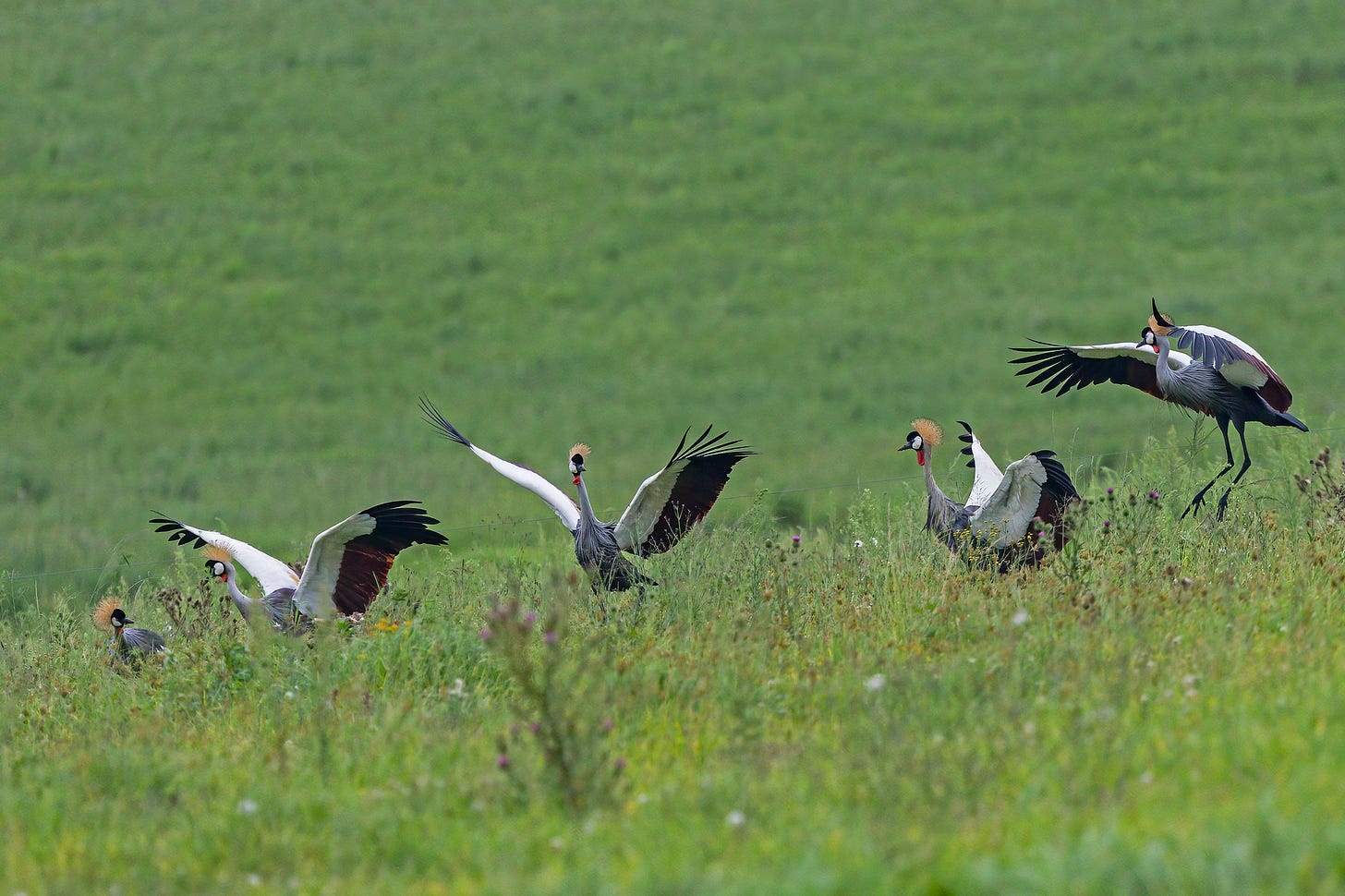

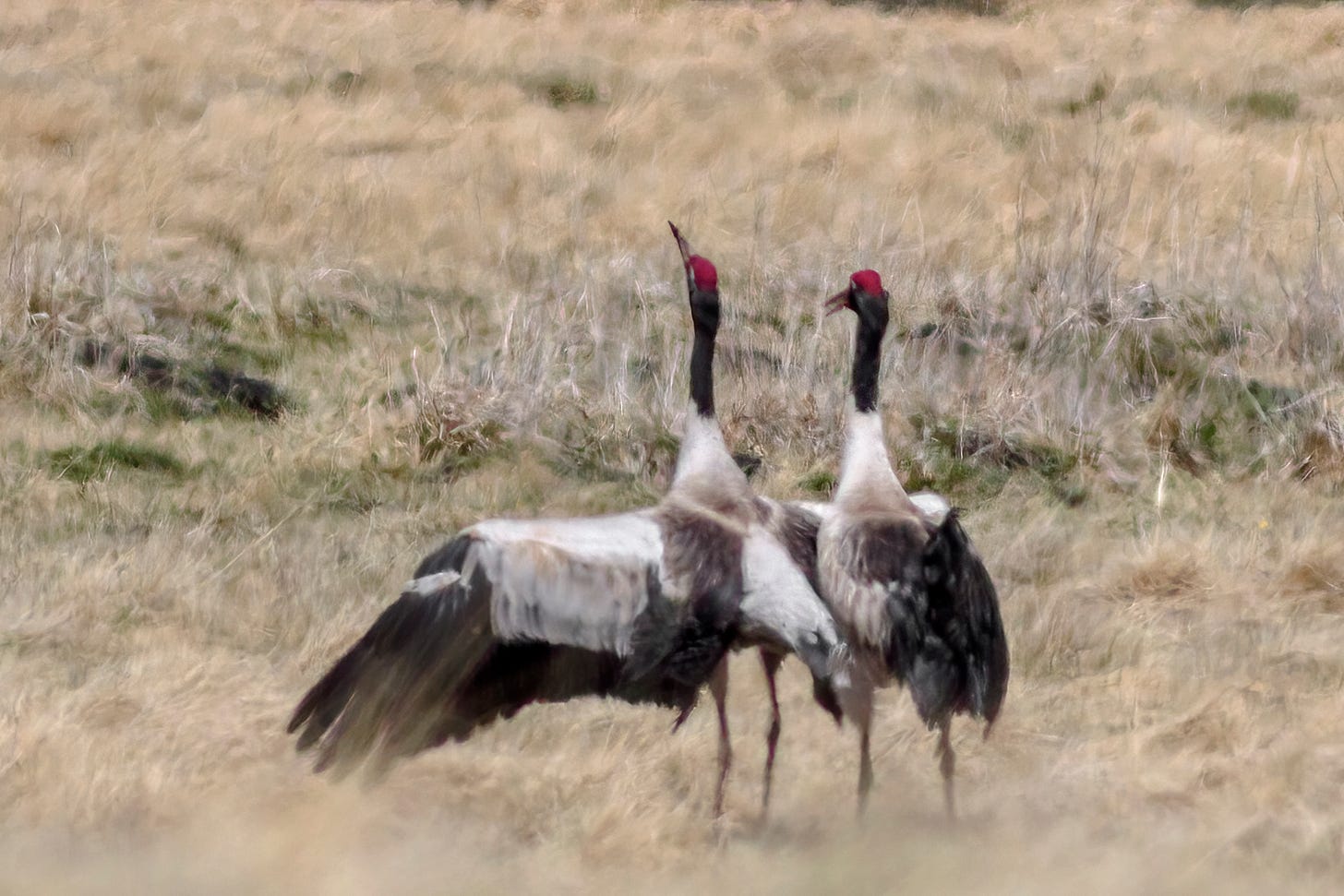
I've only experienced Sandhill Cranes in their natural habitat. My 1st encounter was when my son moved up to the Sault. I had to pull over as there were hundreds of them in the fields. My girlfriend and I couldn't believe our eyes. We stopped at watched them for about 20 minutes. I was so excited when 4 flew over a few weeks ago. I've lived in Whitby, my entire life, and have been birding since I was a teenager, over 45 years ago and have never seen Sandhill Cranes here in Southern Ontario.
Beautiful birds and beautiful words, as well as amazing photos! Thank you, Margaret! Makes me “almost” want to be a “birder”!